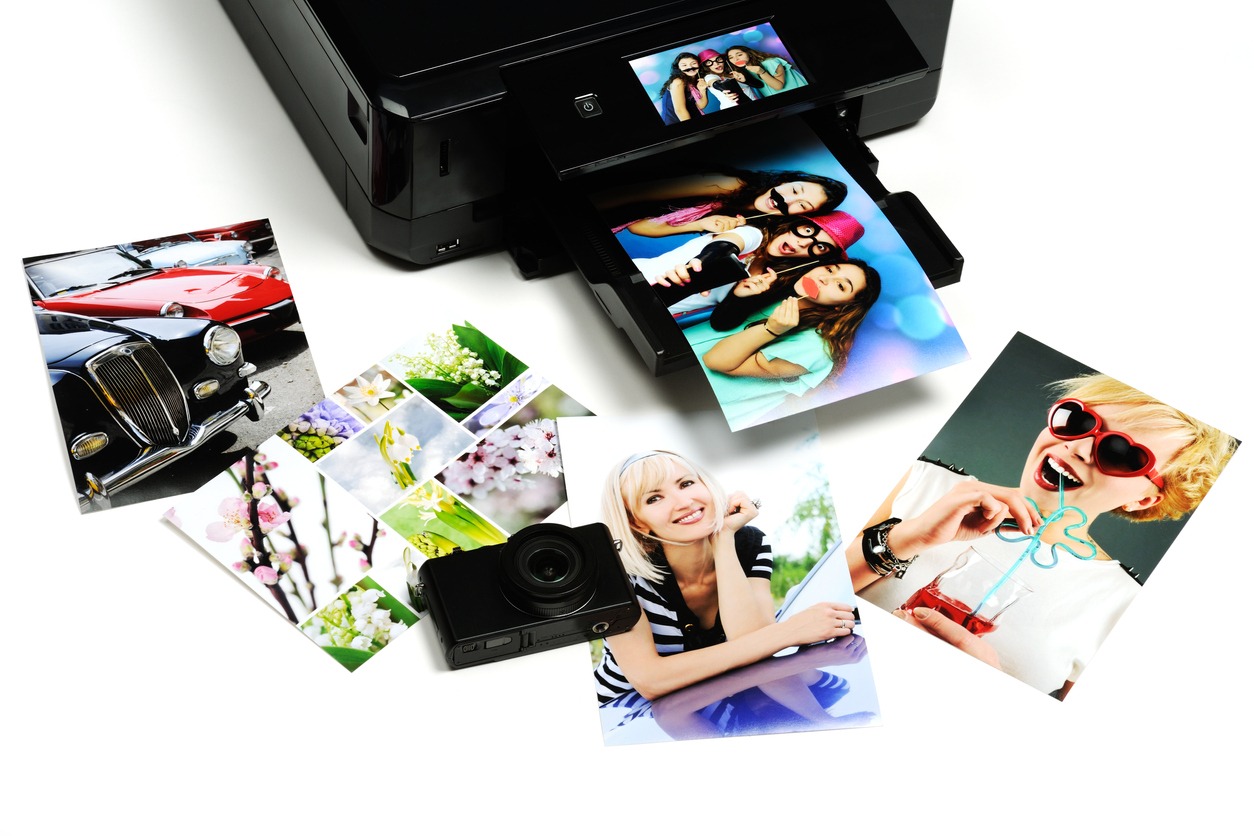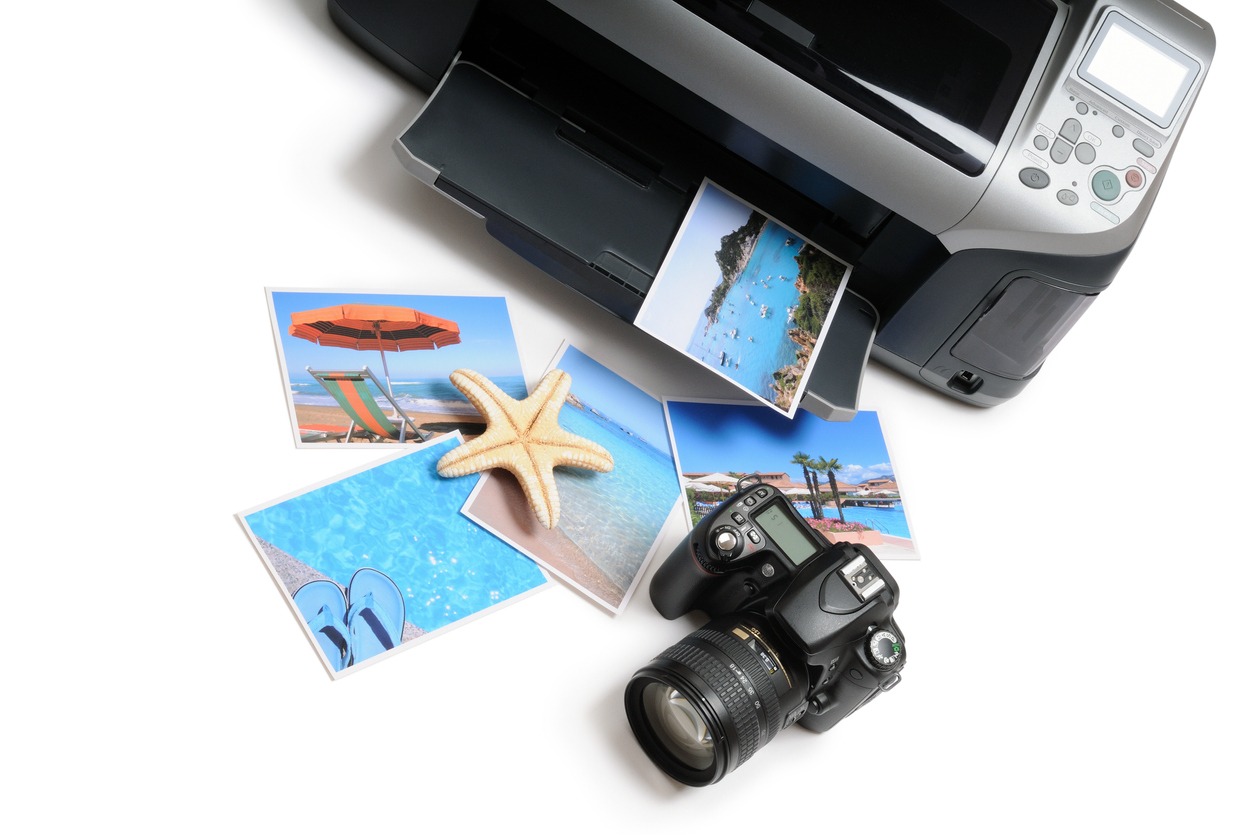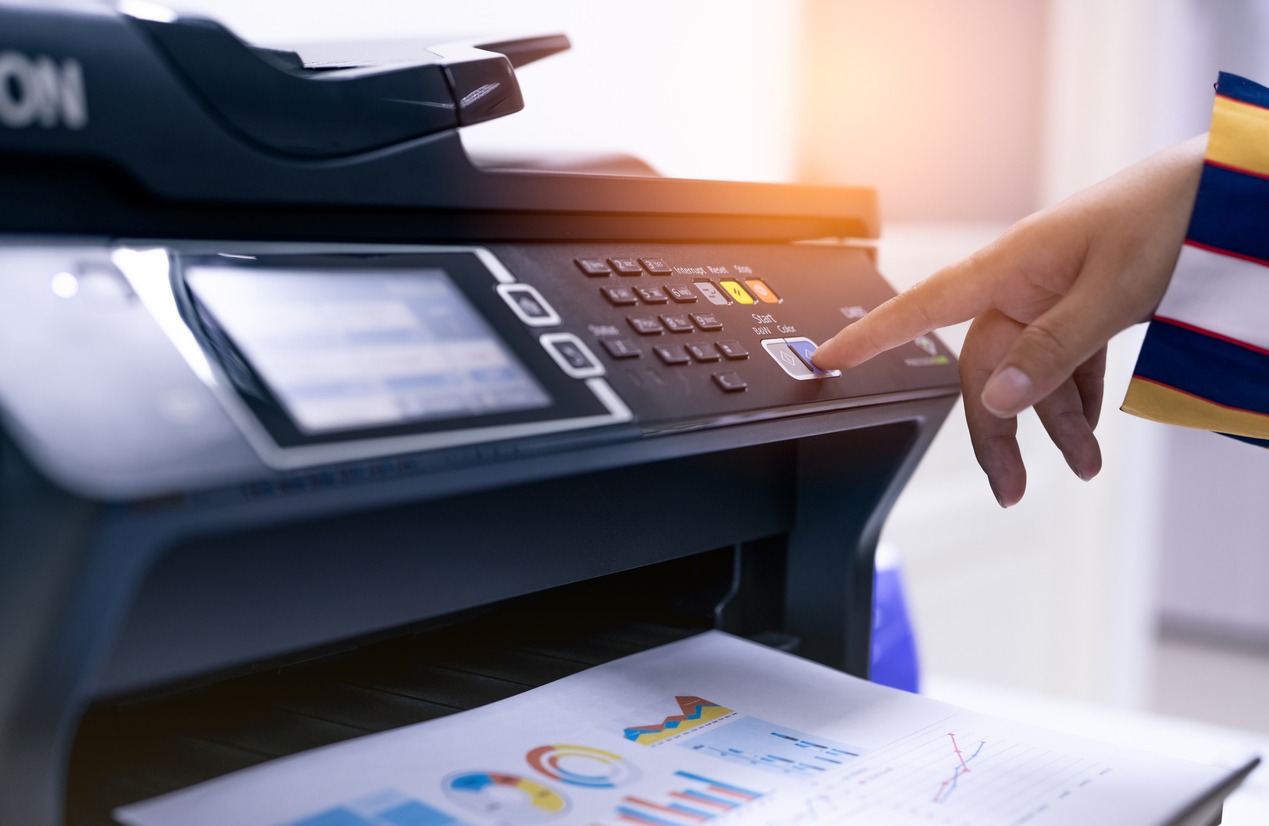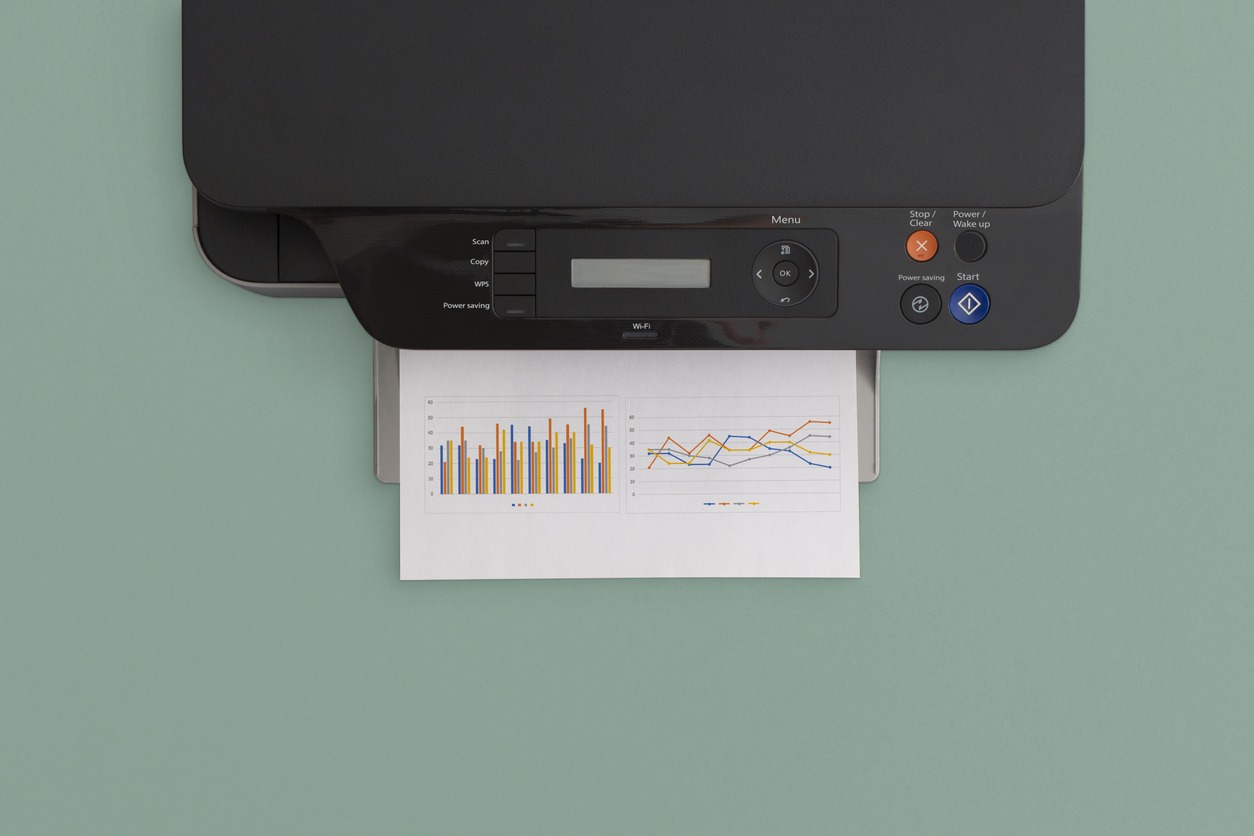A photo printer is an essential part of a photographer’s setup as it allows them to take a closer look at their photo and even use it for various purposes. Not all printers can be used as photo printers because they lack the necessary quality and ability to print high-quality images. Photo printers make use of color ink or color cartridges to ensure that what you see on the screen is accurately represented on paper.
There are a large variety of photo printers available on the market, which means you need to put in thought and consideration before you purchase one. Photo printers differ based on size, print resolution, and speed. Due to all these reasons, you must consider your usage and needs before purchasing one.
Inkjet Printer or Dye Sublimation Printer
If you are in the market to purchase a photo printer, you have two different kinds of printers to choose from; inkjet printers and dye sublimation printers.
Inkjet printers are ideal for home use as they are relatively inexpensive and easy to use. They have a simple design and are reliable for small tasks. Since inkjet printers use ink cartridges, they can print high-quality images without issues. They are also quite versatile, as you can print on various paper types. Most inkjet printers also print with a high DPI or dots per inch, meaning they look seamless and high-definition.
The other kind of printer is a dye sublimation printer that is designed for photography reproduction. These printers can produce high-quality glossy prints, making them an essential part of a photographer’s gear. They are also quite fast, meaning you can get a large number of images done in a short amount of time. The one disadvantage of these kinds of printers is that they are less flexible in paper types, sizes, and finishes. You can only use a specific size and type of paper when you intend to use a dye sublimation printer.
Some Things To Consider Before Purchasing a Photo Printer
When purchasing a photo printer, it is important that you consider a few things beforehand.
Determine your budget
Photo printers can range in price from under $100 to several thousand dollars, so it’s important to determine your budget before shopping.
Consider the type of photos you want to print
Different printers are better suited for different types of photos. For example, some printers are better at printing black-and-white photos, while others excel at printing colorful, vibrant images.
Think about the size of the prints you want to produce
Some printers are better suited for printing small, wallet-sized photos, while others are capable of producing larger prints.
Consider the type of paper you want to use
Make sure the printer can handle the type of paper you want to use for your photos, such as a glossy or matte finish.
Look for a printer with good color accuracy.
It’s important to find a printer that can produce accurate colors, especially if you’re printing photos of people or landscapes.
Read reviews
Look for reviews from other customers to get a sense of the pros and cons of different photo printers.
What To Look For in a Photo Printer
Suppose you are in the market for a high-quality photo printer. In that case, you may have noticed the sheer amount of options available. It can be difficult to choose when you have so many options. To make this task a bit easier, you should consider a few factors that can significantly affect the quality and effectiveness of the device.
Print Size and Flexibility
When investing in a photo printer, the device must be able to produce small and large prints. Although printing large prints require large-format printers, the printer you purchase should be able to print medium to large images. Additionally, it should be able to do so without using too much ink.
The print size is one of the biggest limitations when purchasing a printer. It is good practice to consider the size of prints you will likely take out. If your tasks mainly involve printing small images, you should purchase a printer that will allow you to do so.
For beginners, professionals suggest 13 inches or wider. You can also choose a printer that can print on standard letter-sized paper. These allow you to print 4 x 6 inches and 8 x 10 inches photographs. With a 13-inch printer, you can print photos up to 13 x 19 inches, which are large enough to be framed and hung on a wall.
If you partake in landscape photography and want to print large images, you should opt for a 17-inch printer. You can use these printers to print 17 inches to 22-inch prints and panoramic sizes. If you want to print even larger photos, you can purchase a 24-inch printer. Although these allow you to print large images. They are tough to maintain and require large ink cartridges, which significantly raise maintenance costs.
Print Resolution
When purchasing a printer, look for a printer that can produce high-quality prints with good color accuracy and detail. A low-resolution printer may be cheaper, but the photographs will be of inferior quality and look grainy. Resolution is measured in DPI; the higher the DPI or dots per inch, the less noticeable they will be and the more detail your prints will have. At the very least, your printer should have a resolution of at least 4800 x 1200 DPI. Printers with higher resolutions will be more expensive. Still, they will produce much better pictures, which may be worth the investment.
High-Quality Ink
Many printers on the market use the term archival ink and guarantee that the printed photograph will last at least 50 to 100 years. If you are investing in a photo printer, you must purchase one that produces images that will last the test of time. Archival printing involves using a long-lasting pigment-based ink system, allowing the photograph to last much longer than if coloring agents were used. By using archival ink, you will also have peace of mind that the prints will remain high quality for years to come.
Print Speed
Print speed is the measure of the time it takes for the printer to print from the moment you hit the print button until the photo is ejected. Suppose you print photographs for professional work and will be printing a large number of prints each day. In that case, the printer must be both fast and efficient. Ensure that the printer you are purchasing prints quickly and that your gear can keep up with your printer. Otherwise, it can get irritating to wait as your printer takes time.
Media Support
When purchasing a printer, you must question the kind of paper you will be printing on. If you plan to print on materials other than paper, you should ensure that your printer is up for the job. Since most printers have a standard feed method, they are designed to print on paper. If you try inserting thicker media to print on, it may get bent or creased. To avoid such a situation, you should opt for a straight-feed or fine-art feed printer if you plan on printing on thicker paper. Make sure the printer can handle the type of paper you want to use for your photos, such as a glossy or matte finish.
Printer Sizes
Printers come in all shapes and sizes; depending on your space, you can purchase a small or a large printer. The printer size also greatly depends on the size of the photograph you are printing. If you intend to print large prints, you will need a large printer that will take up a lot of space. On the other hand, if you want to print small images and carry your printer on photography adventures, you can purchase a small, ultra-portable machine. Consider the size and weight of the printer, especially if you plan to take it with you on the go.
It is important to note that small portable printers are usually more expensive as the manufacturers have to fit all the technology within a small device.
Connectivity
In terms of connectivity, you can find wireless and wired photo printers. Some printers are designed to be connected to your computer using a USB connection. Others can be used as standalone devices. The latter can be connected to your phone and tablet using Wi-Fi connectivity.
Wired printers sometimes offer just a USB connector, and some add an Ethernet jack, which is easier to use in an office setting. Generally, Wi-Fi connectivity is preferred because it makes it so easy to print using devices other than your main computer. To make your printer more versatile, you should look for a printer that offers a variety of connectivity options, such as WiFi, Bluetooth, and NFC.
Cost of Printing
Judging the cost of printing can be difficult with the different types of printers and inks available on the market. Printers use different amounts of ink depending on their DPI, which can also complicate the matter. The best way to estimate the cost of printing is to divide the estimated yield of each cartridge provided by the manufacturer. By doing so, you will get to know the cost per page.
Before you purchase a printer, you should always determine your budget and look for a printer that offers a good balance of quality and price.
Pros and Cons of Photo Printers
Before purchasing photo printers, it is essential that you pay attention to a few pros and cons to ensure that you are buying the correct printer for your needs.
| Pros | Cons |
| Photo printers are designed to produce high-quality prints with good color accuracy and detail. | Photo printers can be expensive, especially high-end models. |
| With a photo printer, you can easily print photos at home without having to go to a store or wait for prints to be delivered. | Printing photos can use a lot of ink, which can be expensive to replace. |
| A photo printer gives you control over the printing process, allowing you to make adjustments to the prints as needed. | Some photo printers only work with a specific type of paper, which can be limiting. |
| Depending on the printer you choose, and the volume of prints you produce, printing photos at home can be more cost-effective than having them printed professionally. | Photo printers require regular cleaning and maintenance to ensure the best print quality. |
FAQs
1. What type of printer is best for photographs?
There are two types of printers that are preferred by professionals to print photographs. These are the inkjet printers and dye sublimation printers. If you print photos occasionally, an inkjet printer will suit you better. On the other hand, if you print multiple pictures and need high-quality images, a dye sublimation printer is much better.
2. Is it worth buying a home photo printer?
A home photo printer is quite helpful because it allows you the creative freedom to print your photographs however you like. Additionally, you don’t need to make multiple trips to the printer shop, so it is, in a way, more economical.
3. What are the factors that you should consider when purchasing a photo printer?
When purchasing a photo printer, you should consider its size, photo resolution, print speed, and the kind of ink it uses.
Conclusion
After taking a photo, many photographers want a physical copy of it so that they can frame it and hang it on a wall or distribute it as prints. To do so, you must have a high-quality printer. Since there are so many available on the market, it is essential that you consider a few factors. By considering their print size, the kind of ink they use, their print resolution, and their connectivity options, you can choose one that best fits your needs.



